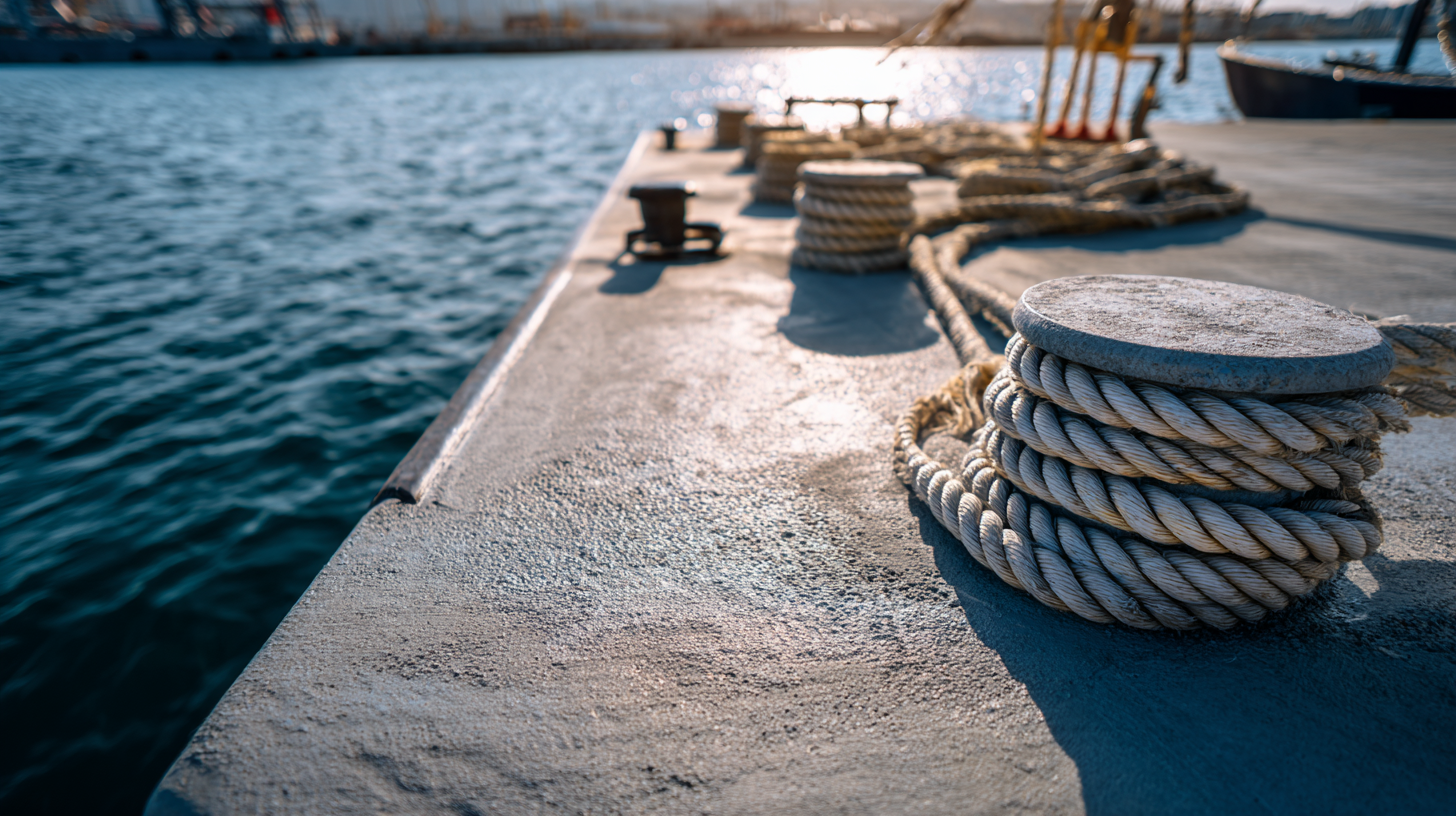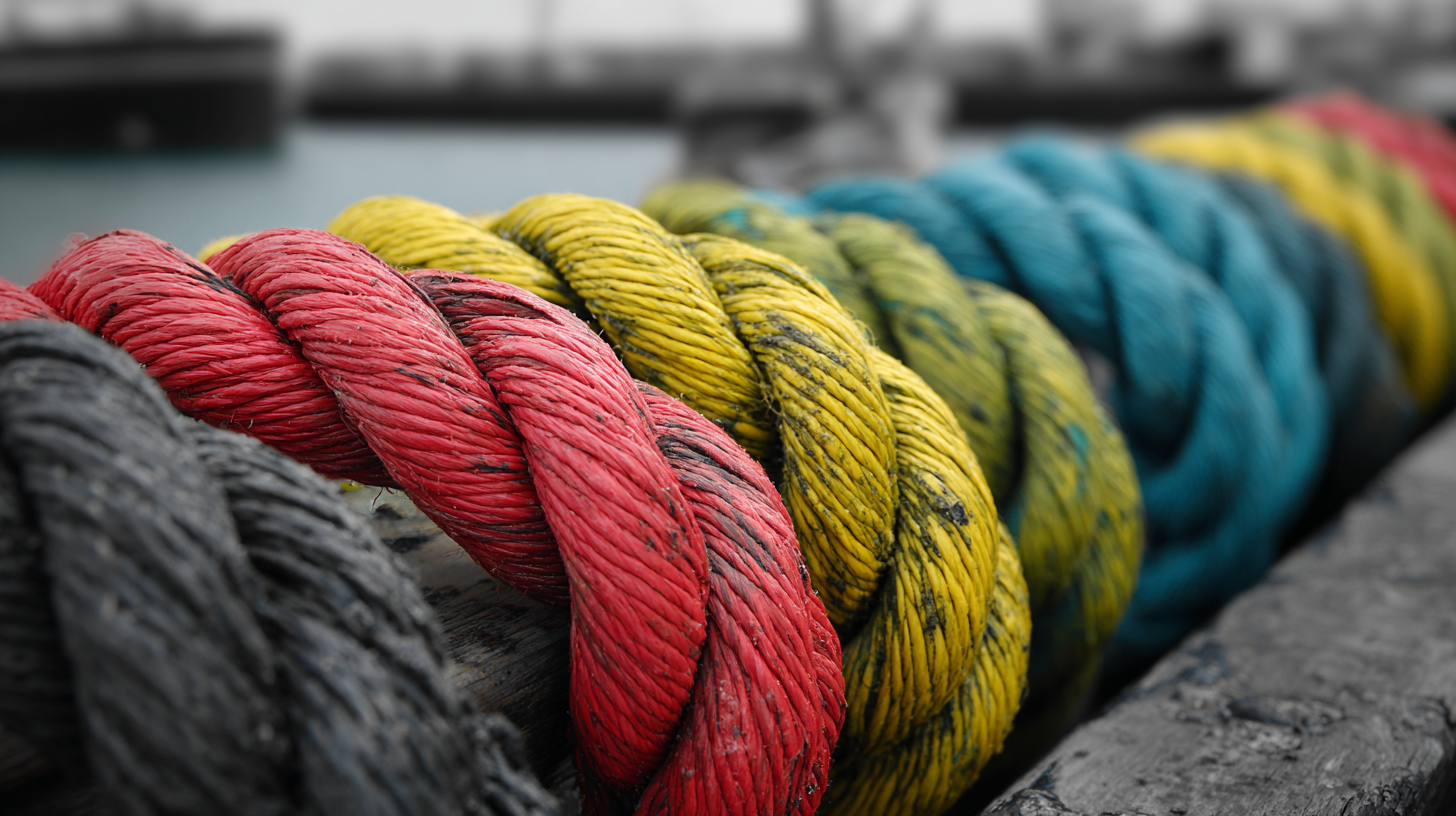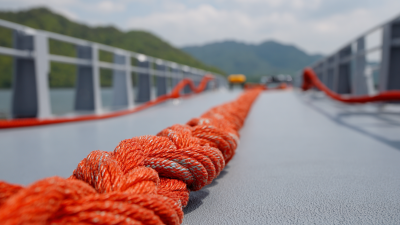Leave Your Message
-
Phone
-
E-mail
-
WhatsApp
Floating Dock Lines are critical elements in ensuring the safety and reliability of marine operations, especially in environments that demand resilience against changing tides and weather conditions. According to a recent report by the International Maritime Organization, improper management of dock lines can lead to an increase in marine accidents, with a staggering 30% of reported incidents attributed to inadequate mooring practices. Understanding the intricacies of Floating Dock Lines is essential for boaters and marine professionals alike, as these lines serve not only as a connection to the dock but also as a safeguard against unforeseen environmental forces. Incorporating best practices in the selection and maintenance of these lines can enhance safety, prolong equipment lifespan, and mitigate risks in both commercial and recreational maritime activities. This article will provide essential tips to help you navigate the complexities of Floating Dock Lines, ensuring safe and reliable use in various marine settings.

When selecting the right type of floating dock lines, it is crucial to consider the material and design that best suits your marine environment. According to a report by the National Marine Manufacturers Association (NMMA), nearly 30% of boating accidents are attributed to improper mooring or docking practices. This emphasizes the need for reliable dock lines that can withstand various conditions. Polypropylene and nylon are the most common materials; while polypropylene is lightweight and floats on water, making it an excellent choice for floating docks, nylon offers superior strength and stretch, making it ideal for larger vessels or rough waters.
Another important factor is the diameter of the dock line. The American Boat and Yacht Council (ABYC) recommends using a line with a diameter appropriate to the size of your boat: generally, a 3/8 inch line is suitable for vessels up to 25 feet, while larger boats may require lines of 1/2 inch or more. Additionally, consider the length of the dock lines, ensuring they are long enough to allow for tidal changes and robust enough to handle wind and current forces. Making an informed choice on floating dock lines can enhance safety and longevity in your marine endeavors.
| Type of Dock Line | Material | Length (ft) | Diameter (in) | Breaking Strength (lbs) | Recommended Use |
|---|---|---|---|---|---|
| Polypropylene Dock Line | Polypropylene | 30 | 3/8 | 2200 | Small boats, daily use |
| Nylon Dock Line | Nylon | 40 | 1/2 | 4000 | Larger boats, rough conditions |
| Polyester Dock Line | Polyester | 50 | 5/8 | 3500 | Multi-purpose, medium boats |
| Braided Dock Line | Polyethylene | 60 | 3/4 | 5000 | Heavy-duty applications, large vessels |
When considering floating dock lines, safety must be the paramount concern for any marine activity. These specialized lines are designed to remain afloat, reducing the risk of entanglement or snags, which can sadly lead to accidents. One key feature of floating dock lines is their buoyancy, which allows them to stay on the surface of the water rather than sinking. This ensures that they are easily accessible and reduces the likelihood of tripping hazards around the docked vessel.
Another significant characteristic of floating dock lines is their visibility. Many lines are crafted in bright colors or equipped with reflective materials to enhance visibility in low-light conditions. This feature is particularly important in emergencies, ensuring that dock lines can be quickly identified and managed. Additionally, high-quality floating dock lines are often made from durable, UV-resistant materials, providing both longevity and reliability. Investing in well-constructed lines ensures that they can withstand the elements, thereby enhancing safety during docking and undocking processes.
When it comes to securing your floating dock lines, following a step-by-step guide is crucial for ensuring safety and reliability. Begin by selecting the right materials: use marine-grade lines that resist deterioration from water exposure and UV rays. Make sure to choose a line with appropriate thickness and strength for your docking system.
Next, secure one end of the floating dock line to a stable anchor point on the dock, such as a cleat or a ring. Loop the line several times around the anchor, and utilize a figure-eight knot to ensure a snug fit that can withstand the movements of water. This technique not only keeps your dock stable but also protects it from potential wear caused by shifting tides.
Finally, adjust the tension of the lines properly. A common tip is to keep your lines tight but not overly so; this prevents unnecessary strain during changing weather conditions. If using multiple lines, ensure they are evenly spaced and that each line has enough slack to allow for movement without compromising stability. By following these tips, you can ensure your floating dock is securely and effectively anchored for safe marine use.
This chart illustrates the breaking strength of various dock line materials commonly used in marine applications. Understanding these strengths is crucial for safe and reliable use of floating docks.
When using floating dock lines, there are several common mistakes that boaters should avoid to ensure safety and reliability. One significant error is using lines that are too short. Short lines can lead to excessive tension, risking damage to both the boat and the dock. It's crucial to measure the distance between the dock and the boat for optimal line length, allowing enough slack for water fluctuations and wave actions.
Another frequent misstep is neglecting to check the condition of the dock lines before use. Frayed, worn, or improperly coiled lines can break or become tangled, posing a hazard. Regular inspections and maintenance, including cleaning and UV protection, can prolong the life of the lines and enhance performance. Additionally, many boaters tend to underestimate the importance of properly securing their lines. Inadequate knots can come undone, resulting in loss of control. Familiarizing oneself with reliable knot techniques adds an essential layer of security while docking.

 Maintaining floating dock lines is crucial for ensuring their longevity and reliability in marine environments. Regular inspections are essential; check for signs of wear, fraying, or abrasion, especially in areas that may experience rubbing against dock edges or other surfaces. Developing a routine maintenance schedule helps identify potential issues before they escalate, saving time and costs associated with replacements.
Maintaining floating dock lines is crucial for ensuring their longevity and reliability in marine environments. Regular inspections are essential; check for signs of wear, fraying, or abrasion, especially in areas that may experience rubbing against dock edges or other surfaces. Developing a routine maintenance schedule helps identify potential issues before they escalate, saving time and costs associated with replacements.
Proper cleaning is another vital aspect of dock line maintenance. Saltwater and marine growth can damage lines over time, so rinsing them with fresh water after use is recommended. Additionally, using a gentle soap can help remove any stubborn grime or buildup. When not in use, store the dock lines in a cool, dry place, away from direct sunlight, to prevent UV damage and degradation of materials. Employing these maintenance tips will significantly extend the lifespan of your floating dock lines, ensuring they remain safe and reliable for all marine activities.






